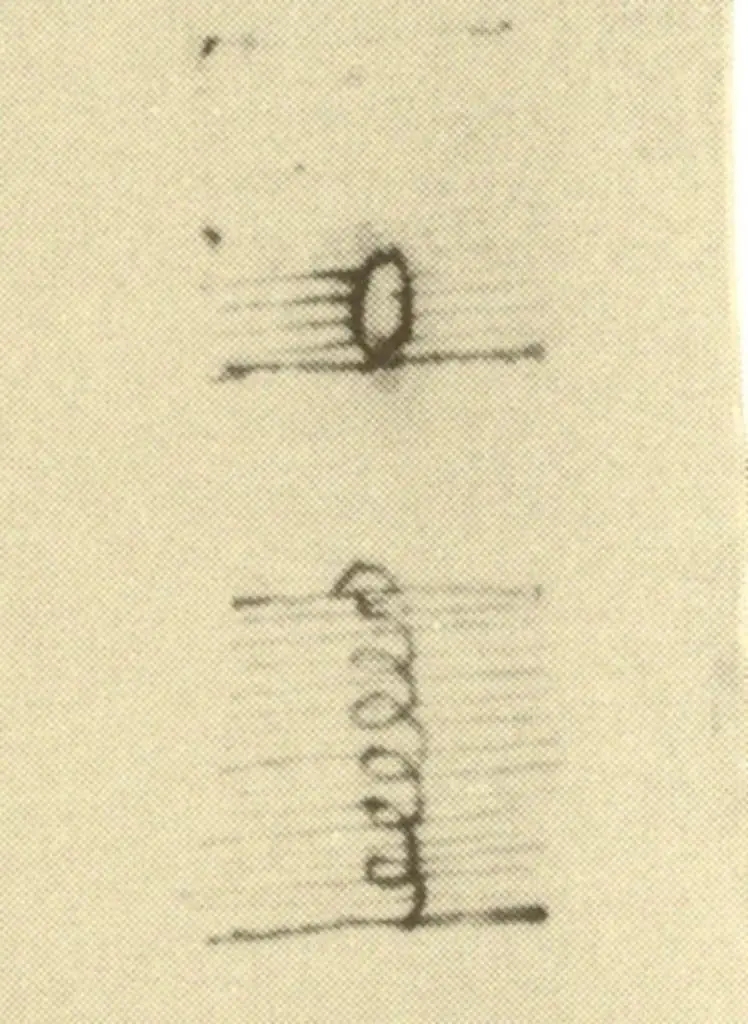博文
500年未解,研究人员破解了达芬奇悖论
||
500年未解,研究人员破解了达芬奇悖论
诸平


据塞维利亚大学(University Of Seville)2023年2月3日报道,500年未解,研究人员破解了达芬奇悖论(Unsolved for 500 Years: Researchers Crack Leonardo da Vinci’s Paradox)。
500年前,莱昂纳多·达芬奇(Leonardo da Vinci)观察到气泡以之字形或螺旋形的方式偏离直线路径。然而,这种周期性运动的原因至今仍不清楚。来自塞维利亚大学和布里斯托尔大学(University Of Bristol)的研究人员解开了气泡在水中不稳定上升路径的谜团。塞维利亚大学的米格尔·安杰尔·赫拉达(Miguel ángel Herrada)教授和布里斯托大学的延斯·埃格斯(Jens G. Eggers)发现了一种机制,可以解释气泡在水中上升的不规则运动。相关研究结果于2023年1月17日已经在美国《国家科学院院刊》(Proceedings of the National Academy of Sciences简称PNAS)杂志网站发表——Miguel A. Herrada, Jens G. Eggers. Path instability of an air bubble rising in water. Proceedings of the National Academy of Sciences, 17 January 2023, 120 (4): e2216830120. DOI: 10.1073/pnas.2216830120. https://www.pnas.org/doi/10.1073/pnas.2216830120. 该研究结果可以为人们深入了解介于固态和气态之间的粒子的行为提供参考。
莱昂纳多·达芬奇在500年前就观察到,气泡如果足够大,会周期性地从直线运动中偏离为之字形或螺旋形运动。然而,这种现象的定量描述或物理机制从未被发现来解释这种周期性运动。
莱昂纳多·达芬奇在他的《莱斯特法典》(Codex Leicester)手稿中的草图,显示了一个上升的气泡的螺旋运动(Fig. 2)。发表在PNAS的这篇文章的作者们开发了一种数值离散技术来精确地描述气泡的气水界面,这使得他们能够模拟气泡的运动并探索其稳定性。他们的模拟结果与非稳态气泡运动的高精度测量结果非常吻合,并且表明当气泡的球面半径超过0.926 mm时,气泡会偏离水中的直线轨迹,这一结果与20世纪90年代用超纯水获得的实验值相差不到2%。
研究人员提出了一种气泡轨迹不稳定的机制,通过这种机制,气泡的周期性倾斜会改变其曲率,从而影响向上的速度,引起气泡轨迹的摆动,使气泡的曲率增大的一侧向上倾斜。然后,随着流体移动速度加快,流体压力在高曲率表面周围下降,压力不平衡使气泡返回到其原始位置,重新开始周期性循环。
上述介绍,仅供参考。欲了解更多信息,敬请注意浏览原文或者相关报道。
It has been documented since the Renaissance that an air bubble rising in water will deviate from its straight, steady path to perform a periodic zigzag or spiral motion once the bubble is above a critical size. Yet, unsteady bubble rise has resisted quantitative description, and the physical mechanism remains in dispute. Using a numerical mapping technique, we for the first time find quantitative agreement with high-precision measurements of the instability. Our linear stability analysis shows that the straight path of an air bubble in water becomes unstable to a periodic perturbation (a Hopf bifurcation) above a critical spherical radius of R = 0.926 mm, within 2% of the experimental value. While it was previously believed that the bubble’s wake becomes unstable, we now demonstrate a new mechanism, based on the interplay between flow and bubble deformation.
https://blog.sciencenet.cn/blog-212210-1375054.html
上一篇:每天“蒂巴格式”走几分钟对公共健康有重要好处
下一篇:抗癌药物为败血症治疗带来新希望